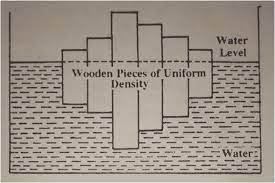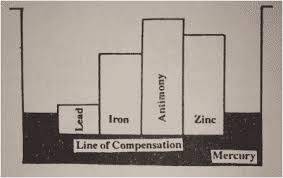Isostasy is a fundamental principle in geology that helps to explain the balance of the Earth’s landscape. It is the concept that the Earth’s crust “floats” on the underlying mantle, like how an iceberg floats in water. In this article, we’ll explore the concept of isostasy, its key elements, and how it impacts the Earth’s surface.

Table of Contents
What is Isostasy?
Isostasy is a term that comes from the Greek words “iso,” meaning equal, and “stasis,” meaning balance. The principle of isostasy states that the Earth’s crust “floats” on the underlying mantle in a state of balance. The weight of the crust creates a downward force, while the underlying mantle provides an upward force in response. This balance ensures that the Earth’s surface remains relatively stable over time.
"Isostasy can be thought of as a balance between the weight of the Earth's crust and the underlying mantle."
The weight of the crust creates a downward force, while the underlying mantle provides an upward force in response. This balance is maintained by the mantle flowing and adjusting to changes in the weight of the crust.
The concept of isostasy is important because it helps explain why certain landforms are present on the Earth’s surface. For example, the weight of a mountain range creates a downward force that pushes into the underlying mantle, causing the mantle to respond by pushing back upward. This creates a balance that allows the mountains to remain stable over time. Similarly, the weight of a shallow ocean floor creates a downward force that is balanced by the underlying mantle, helping to explain the relatively stable depths of the ocean.
Isostasy Theory of Airy
The Isostasy Theory suggests that the Earth’s crust and upper mantle behave like a floating body in equilibrium. This means that the weight of the crust and the underlying mantle is balanced by the buoyant force of the denser material below it. The denser material below the crust is known as the asthenosphere, which is a partially molten layer of the Earth’s mantle.

According to the Airy Isostasy Theory, the density of different columns of land remains the same. The density does not change with the height of the column. However, the height of the column differs.
Evaluation of the Airy Theory
While the Isostasy Theory proposed by Airy has been influential in understanding the Earth’s geology, it has also been subject to criticism and limitations. One of the main criticisms of the theory is that it assumes a simplified model of the Earth’s crust and mantle that may not accurately reflect the complex interactions that occur in reality.
First Criticism
One of the limitations of the Isostasy Theory is that it does not account for the effects of lateral variations in density within the Earth’s crust and mantle. In reality, the density of the Earth’s crust and mantle can vary horizontally due to differences in composition, temperature, and pressure. This lateral variation can have a significant impact on the Earth’s gravity field, and therefore, cannot be ignored.
Second Criticism
Another limitation of the Isostasy Theory is that it assumes that the Earth’s crust is composed of a uniform layer of material. However, in reality, the Earth’s crust is composed of different types of rocks, which have different densities and properties. These differences can affect the balance of forces within the crust and mantle and may result in deviations from isostatic equilibrium.
Third Criticism
Moreover, the Isostasy Theory also does not account for the effects of dynamic processes such as plate tectonics and mantle convection, which can cause the Earth’s crust and mantle to deform and change over time. These processes can cause variations in the elevation of the Earth’s surface that cannot be explained solely by isostasy.
In summary, the Isostasy Theory proposed by Airy has been an important contribution to our understanding of the Earth’s geology. However, the theory has limitations and cannot fully explain the complex interactions and processes that occur within the Earth’s crust and mantle.
Isostasy Theory of Archdeacon Pratt
According to the Isostasy Theory, the Earth’s crust “floats” on a denser, more plastic layer of the mantle, much like an iceberg floats on water. The theory posits that the crust and mantle are in a state of equilibrium, with the amount of crustal material above sea level being balanced by an equivalent amount of denser material below sea level.

The theory was developed to explain the observed variations in the elevation of land masses and the distribution of mountain ranges. The basic idea is that the weight of the mountains and high plateaus is compensated for by a corresponding depression of the underlying crust and mantle, and vice versa.
The Isostasy Theory has been widely accepted in the field of geology and has been used to explain a range of geological phenomena, including the formation of mountain ranges, the uplift and subsidence of land masses, and the dynamics of earthquakes and volcanic activity. However, the theory has also been refined and expanded over the years, as new data and observations have been made.
The thickness and elevation of the Earth’s crust are determined by the density of the material that makes up the crust and the underlying mantle. In areas where the crust is thick, such as mountain ranges, the crust is compensated by a corresponding root of low-density material that extends down into the mantle.
He proposed the concept of level of compensation. There is no change in density below this level. He believed in uniform depth with varying densities.
Conclusion
Isostasy is a fundamental principle in geology that helps explain the balance of the Earth’s landscape. It is the concept that the Earth’s crust “floats” on the underlying mantle, creating a balance between the weight of the crust and the underlying mantle. Isostasy has a significant impact on the Earth’s surface and geography, helping to explain the stability of certain landforms, predict the behavior of the Earth’s surface in response to changes, and understand the formation of rift valleys and earthquakes.
Read: Geography